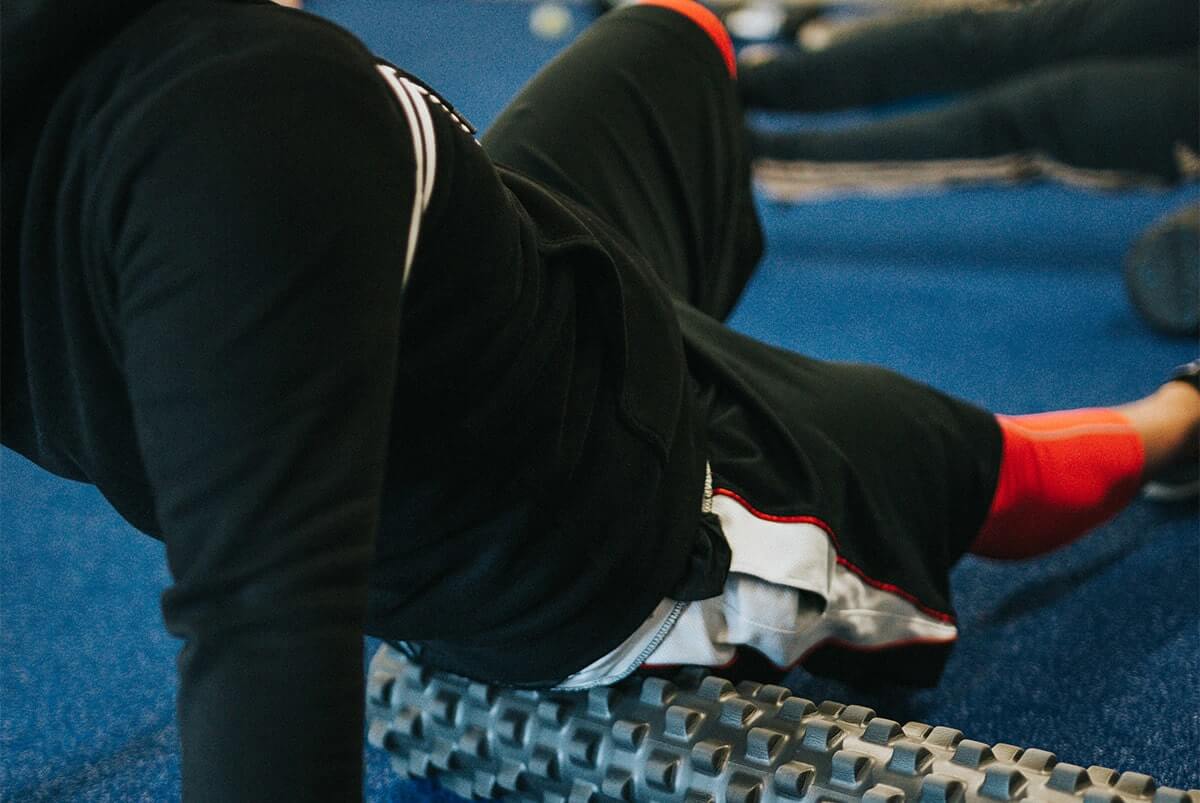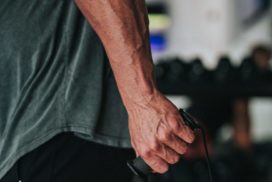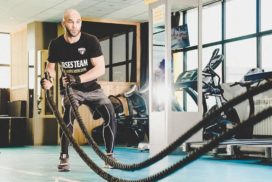Along with using saunas, taking ice baths, and consuming protein, foam rolling is a very common method for decreasing muscle soreness, or DOMS, and speeding up the recovery process.
The general theory behind foam rolling, also called self-myofascial release, is that by “rolling” out the muscle, you can release knots in the muscle that develop from training. These knots left to their own impede muscle growth and recovery, according to foam roller advocates, and they require due attention via message tools in order to resolve.
By removing these knots in the muscle, better function will return and the muscle will be more able to go through the next workout, without the previous workouts having any negative impact.
Foam rollers have been used for decades by many runners and athletes for recovery and there is evidence to support several benefits that foam rolling can have for weightlifters as well.
The Benefits of Foam Rolling
These are all the benefits of foam rolling that have been supported by studies.
- Short-term increase in ROM (range of motion)
- Decreased DOMS
- Lower risk of injuries
- Lower fatigue from workouts
Range of Motion
One of the main benefits of foam rolling before workouts is that you can gain an increase in range of motion.
This study done on the use of foam rollers on the hamstrings, found a 4.3% increase in range of motion. There was no increase in strength but the improvement on ROM was statistically significant enough to establish a correlation.
Another study on foam rolling found a significant increase in ankle mobility resulting from a foam rolling warmup prior to working out.
This study examined the relationship between foam rolling and recovery, range of motion, endurance, and performance. It also found that after 8 weeks, foam rolling was able to increase range of motion without decreasing performance or endurance during workouts. This suggests that foam rolling can have a more long-term positive impact on ROM.
Muscle Soreness
A second benefit from foam rolling is decreased muscle soreness from lifting. Foam rolling after workouts can lower the amounts of DOMS from training.
While muscle soreness does not directly have an effect on how well you can train, it is uncomfortable for most people and can make training at full intensity more difficult.
A study on the use of foam rolling right after training for decreased muscle soreness was able to find that foam rolling caused a 50% decrease in DOMS.
This study also found that foam rolling proved to be effective at reducing DOMs from weightlifting.
Injuries
Along with decreasing DOMS, foam rolling can also help recover from and prevent injuries from training.
This meta-analysis on the evidence of foam rolling for recovery and performance from 21 different studies found that foam rolling decreases pain perception and increases flexibility.
Perception of pain usually correlates with the severity of the injury causing pain so it is possible that foam rolling can lower the risk for serious injury during training. Being flexible is also helpful for avoiding injuries, making foam rolling a potential tool to keep weightlifting sustainable.
Fatigue
Finally, foam rolling has been proven by research to reduce fatigue following workouts.
A study done on 26 college-aged adults and foam rolling before exercise found that while foam rolling did not have any effect on performance during exercise, there was a reduced feeling of fatigue afterwards.
A second study on the effect of foam rollers on post-workout fatigue concluded that foam rolling may even have a positive effect on performance during exercise by lowering fatigue from the previous training session.
This decrease in fatigue can help increase the intensity of resistance training since the muscles will feel more fresh.
Which Is the Best Type of Foam Roller?
There are 2 main types of foam rollers, deep tissue foam rollers and “round” foam rollers. The difference between them is that deep tissue foam rollers will have nodules that are able to mimic a real massage while round foam rollers are simply smooth cylinders.
For starting out, round foam rollers are enough to get all the benefits of foam rolling since it will mostly have the same effect on myofascial tissue. This is a good 18 inch round foam roller.
If you want to jump straight itno a deeper foam rolling, the high quality options for deep tissue foam rollers are this 12″ one and this 31″ one. Deep tissue foam rolling anecdotally is deemed to release muscle knots better but both round and deep tissue foam rollers can accomplish similar results.
When Should You Foam Roll?
The best time to foam roll for an increase in range of motion and reduced fatigue is directly before a workout. The best time to foam roll for lowered muscle soreness is right after a workout.
The range of motion increase and lower fatigue from foam rolling is ideal for good form and full contraction during lifts but does not necessarily result in better performance or strength. If you had to choose between foam rolling before or after weightlifting, foam rolling after the workout and just doing a mobility-focused dynamic warmup before the workout would be best.
Summary
The takeaways on the benefits of foam rollers for weightlifters are that they can increase ROM, decrease muscle soreness, lower the risk of injury, and lower fatigue. Foam rolling is not able to increase performance or strength during workouts, however, although there may be an indirect effect from a decrease in fatigue and soreness.
For increase range of motion and lower fatigue, it’s best to foam roll before weightlifting, for less DOMS it is better to foam roll after weightlifting.
For more on training and recovery, such as how stretching helps build muscle and how to start lifting again after time off, click here.







